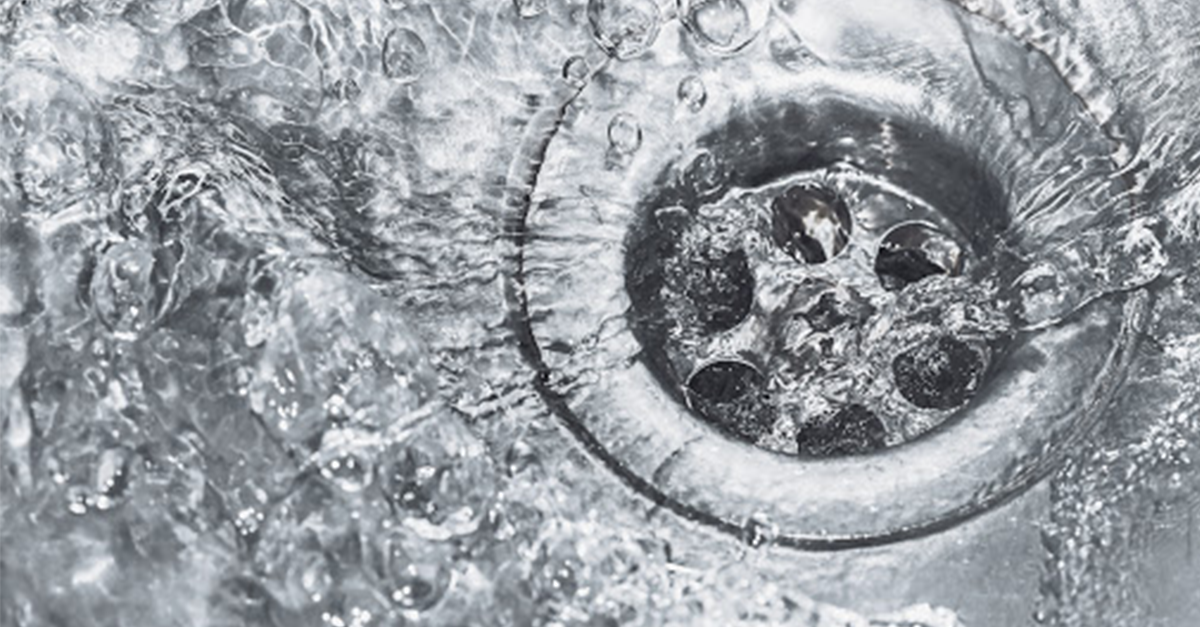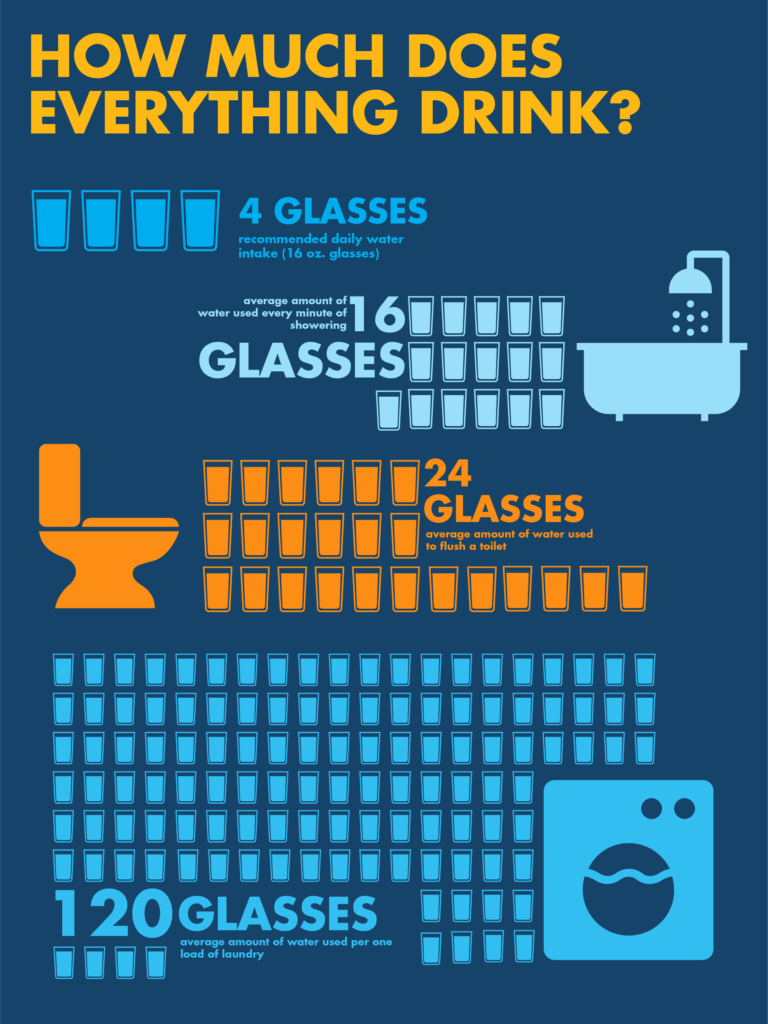How Much Does Everything Drink?
When looking at the overall water consumption of your home, how much does everything drink? Believe it or not, everything drinks. Including appliances, machines and even different parts of our body.
Posted in
Contaminant,
Culligan Nation,
Culligan Solutions,
Drinking Water,
Healthy Home,
Water Problems

Gallons Versus Glasses
If you were to look at every gallon of water used in your home, consider this. One gallon is the equivalent of eight 16-oz. glasses of water. Below are some statistics on how many glasses are typically used in common, everyday activities.
- 1/2 gallon (4 glasses) = Recommended daily water intake
- 2 gallons (16 glasses) = One minute of showering
- 2.5 gallons (20 glasses) = Personal hygiene (brushing teeth, washing hands/face, etc.)
- 3 gallons (24 glasses) = One toilet flush
- 4-10 gallons (32-80 glasses) = One dishwasher cycle
- 15 gallons (120 glasses) = One washing machine cycle

The Importance of Water Quality
The average household in the United States uses roughly 300 gallons of water per day. That's 5,400 glasses of water.
With daily routines and appliances using so much, shouldn't your water be soft and free of any harmful contaminants?
What Could Be in Your Water?
Harmful contaminants in your water can be colorless, tasteless and odorless. Which makes them difficult to detect. A few common contaminants include:
Arsenic
Arsenic enters the water supply through its natural presence in bedrock, or as an industrial byproduct.
The most concerning health risk posed by arsenic is low-level, long-term exposure via drinking water. This exposure can possibly result in increased occurrences of cancer or other health problems.
Chlorine
The taste and smell of chlorine can be unappealing. And chlorine can dry out your skin and hair. While municipalities use chlorine to disinfect the water supply, some consumers prefer to filter this out and avoid the irritating side effects.
Chromium-6
Chromium-6, also known as hexavalent chromium, is a highly toxic contaminant. It may be released into groundwater as a result of certain industrial activities. Such as chrome plating, leather dying, wood preservation and stainless steel manufacturing.
Drinking water with more than 0.02ppb of chromium-6 can potentially cause cancer. Chromium-6 is undetectable, even when present in large amounts. And it effects two out of every three Americans.
Coliform and E. Coli
Coliform bacteria includes a group of 16 species comprising three groups: total coliform, fecal coliform, and E. coli. Bacterial contamination can be a result of septic system failure or agricultural runoff. Symptoms of infection can range from digestive problems such as diarrhea, vomiting, fatigue, and fever to severe conditions such as anemia and kidney failure.
Lead
Lead can seep into the water supply from the lead pipes, solder and fixtures used extensively across the United States.
There is no safe level of lead exposure, especially for children. Harmful and potentially chronic effects can range from stomach pain to brain damage.
Magnesium
Magnesium is a mineral that enters water when rain soaks into the ground, running through sand, soil, and rock. The presence of magnesium creates hard water.
Although this is not a direct health hazard, magnesium in water can cause buildup in pipes, shortened life spans for your appliances, increased soap and detergent use, dry skin, dull hair, and spotted dishes.
Nitrates
Nitrates are essential for food, flowers and greener lawns, which makes them a major ingredient in most fertilizers.
Although nitrates are naturally occurring in soil, overuse of fertilizer is a common cause of water contamination. Nitrates spread on lawns and fields can move quickly through soil and grow more concentrated in groundwater, creating potential health risks especially dangerous for infants and pregnant women.
Radium
Radium is a highly radioactive chemical element. It is undetectable to human senses and can only be detected by professional testing. Long-term consumption of even low doses of radium can increase the likelihood of cancer, birth defects and kidney damage.
Sulfur
Sulfur in water can cause a characteristic rotten egg smell. Also while drinking water, it can cause a laxative effect, leading to increased rates of diarrhea and dehydration. Especially in infants and young children.
It can also stain plumbing fixtures, toilets and sinks, while tarnishing silver and copper housewares.
How Can You Get The Best Water In Your Home?
In general, everyone has different water needs. With this in mind, our experts here at Culligan want to help you choose the right water solution for your home.
Minerals in your water can build up on glassware, shower doors, fixtures, clothes or other items throughout your home. Our Water Softeners will remove these, preventing the negative effects and saving you money.
Culligan Total Home Systems filter and soften your water, bringing soft, great-tasting water to every room of your house. Keep your family healthy and hydrated while keeping your home spot-free.
Our Reverse Osmosis systems are an excellent choice for fresh, clean water right from the tap. RO systems help eliminate contaminants that other types of filtration systems miss. Providing better tasting and safer water for just pennies a glass.
Why Culligan?
Our mission is to provide our customers with the best water treatment products and services available. Because we've seen nearly every water problem imaginable, we have the perfect solution for your unique water treatment needs.
Here at Culligan, we offer a variety of services including water softening, water filtration and free water testing.
